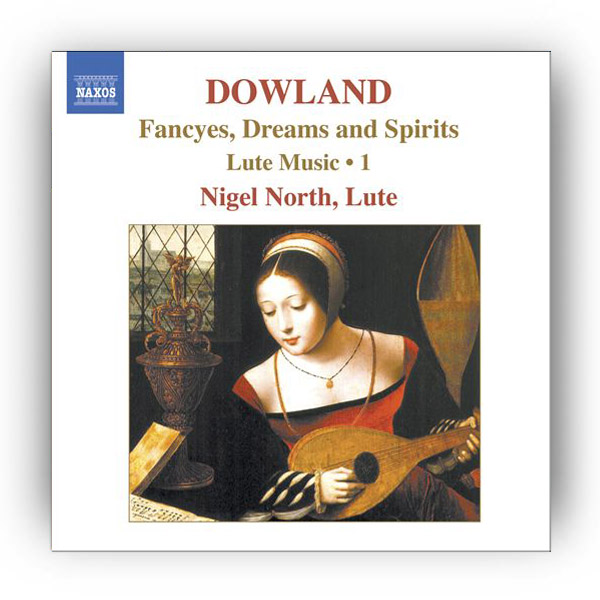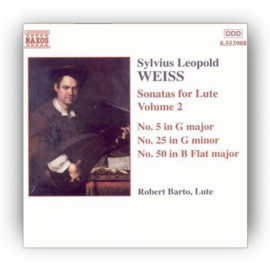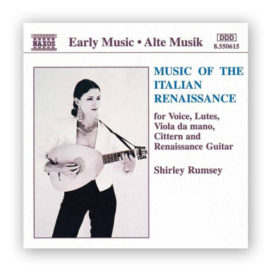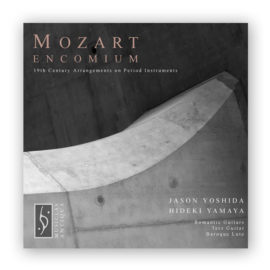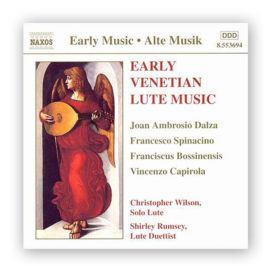Description
Nigel North (1954-), “John Dowland: Lute Music Vol. 1. Fancyes, Dreams & Spirits”.
[checklist style=”circle”]
- Composer: John Dowland (1563-1626)
- Total Length: 01:04:39
[/checklist]
[checklist style=”circle”]
- TRACK LISTING:
1.- Lord Strange’s March
2.- Mrs. White’s Thing
3.- Mrs. White’s Nothing
4.- Fancy (Fantasia) in G major
5.- Mrs. Nichols’ Almain
6.- 7 Fantasies: No. 1. A Fantasie
7.- Prelude
8.- 7 Fantasies: No. 5. A Dream
9.- 7 Fantasies: No. 7. A Fancy
10.- Mrs. Winter’s Jump
11.- Lady Clifton’s Spirit
12.- Mrs. Vaux’s Galliard
13.- Mrs. Vaux’s Jig
14.- Tarleton’s Resurrection
15.- 7 Fantasies: No. 6. A Fancy
16.- 7 Fantasies: No. 2. Forlorn Hope Fancy
17.- The Shoemaker’s Wife
18.- A Toy
19.- Lady Hunsdon’s Puffe
20.- Orlando Sleepeth
21.- Mr. Dowland’s Midnight
22.- 7 Farewell No. 4
23.- 7 Farewell No. 3
[/checklist]
Lute Music 1. A true genius in any artistic field is a rare thing. In the world of the lute John Dowland most certainly qualifies for this accolade. Despite being a Catholic at the wrong time in English history and a man with a rather difficult complaining character, Dowland’s genius still brought him praise and honour from his contemporaries. In a sonnet from 1598, the poet Richard Barnfield paid the most telling tribute to Dowland by writing “Dowland to thee is dear, whose heavenly touch/Upon the lute doth ravish human sense”. From this, and from Dowland’s music itself, we can sense that Dowland’s inimitable qualities as a performer (of his own compositions) were the beauty of his tone coupled with an extraordinary ability to move the emotions of his listeners.
In our 21st century, Dowland is often remembered for his “Lachrimae” Pavan, and as a composer of melancholic music. This gives us, however, a very limited and unduly biased view of our “English Orpheus” because Dowland’s music explores the complete range of human emotions with a unique blend of spirit, heart and intellect. The other qualities which are very much apparent are a wonderful melodic gift and a thorough, ingenius contrapuntal skill. While it is often virtuosic, Dowland’s lute music is always natural and idiomatic. All of these qualities can be found throughout Dowland’s canon of works which principally consists of about one hundred solo lute pieces, almost the same quantity of lute songs, with some consort pieces for viols and lute.
Shakespeare and John Dowland were exact contemporaries, born one year apart. Shakespeare, born in 1564, is known to have revised his works over many years but this does not diminish our admiration of his genius. Similarly, Dowland revised much of his music from year to year. Some lute pieces survive in as many as ten versions so it is impossible to define any as “the authentic one”. The lute was a continuously developing instrument and Dowland would have begun his “luting” on an instrument with only six courses (pairs of strings), but would have played a nine- or ten-course lute in his maturity. Thus we can trace Dowland’s development side by side with that of the lute.
Of course, the writing for the instrument tells us much, as does the history of each manuscript in which the music is found. More interesting evidence can be gleaned from the dedications which Dowland gave to many of his lute pieces. Patrons and courtiers, for example, often changed their names through marriage, they received new titles by Royal command, or they may also have gained a degree at one of the two English Universities. From all these directions, we can build a fairly clear chronological journey. While borrowing ideas from the past, Dowland and Shakespeare were both extremely innovative in their creations. In Dowland’s musical environment, it was perhaps more that the air was full of certain ideas, fashions and conventions and it was simply unavoidable to share or borrow from this collective. For Dowland, this might have been in the form of a phrase, (such as the famous descending Lachrimae theme) or a way of working with a musical figure and its inherent rhetorical meaning.
Fancyes, Dreams and Spirits. The lute repertoire of Elizabethan England abounds with Pavans, Galliards, Almains, and variations on popular ballad tunes, but in comparison with the rest of Europe we find very few Fantasies. In this respect Dowland is unusual. He left us seven wonderful Fantasies written in various forms. Although this may seem small in number, Dowland wrote many more fantasies than his English contemporaries.
To an Elizabethan, a “Fantasie” or “Fancye” was a purely instrumental work in which the composer could literally follow his own Fancy and make an expressive and varied piece of music without any restrictions of form. In writing about the English consort Fantasy, Thomas Morley described it in 1599 as The most principal and chiefest kind of music which is made without a ditty…, that is when a musician taketh a point at his pleasure and wresteth and turneth it as he list… In this may more art be shown than in any other music because the composer is tied to nothing. The English lute Fantasie as a genre, and particularly those of Dowland, had a texture more flexible than the contrapuntal consort fantasy, sometimes strictly contrapuntal and at other times more idiomatically instrumental and playful. Dowland’s awareness of musical style from the whole of Europe is very much mirrored in his lute Fantasies. Sometimes we can sense a very English contrapuntal tradition, including quotations and adaptations of figurations from colleagues such as Thomas Tallis. In contrast, Dowland was also interested in the world of Italian music, especially the madrigals of Marenzio. In his Fantasies, we find that Dowland mixes the English style with a more Italianate one. This often manifests itself as music which is more improvisatory in style, as one would expect from a prelude, toccata or ricercar.
Fantasie No. 1 (P1) is Dowland’s earliest and probably his most well known. Optimistic, bright and virtuosic, it begins serenely with a traditional canzona-like opening with subsequent short contrapuntal sections which accumulate in speed and spirit leading to an exuberunt conclusion.
Fantasies Nos. 5, 6 and 7 are all more toccata-like and Italianate.
Fantasie No. 6 (P6), begins almost like a minor version of the Fantasie No. 1, but soon goes a very different route. Fantasies Nos. 5 (P5) and 7 (P7)are thematically related and sound as though they could be “snap shots” of Dowland’s own improvising.
The pair of chromatic fantasies (No. 2, P2, and No. 3, P3) come as a great contrast. In these two fantasies, Forlone Hope Fancy and Farewell, the contrapuntal invention is extremely rich, and the chromaticism is daring and very innovative for the time. The shocking nature of this chromatic music is partly reminiscent of certain English melancholic madrigals and also of the madrigals by the Italian Gesualdo.
Forlone Hope Fancy, built on a descending chromatic bass, begins in deep melancholy but changes to a rapidly fleeing, runaway flourishing end. In contrast, Farewell has a rising chromatic theme which keeps the fantasia in a melancholic mood throughout.
Fantasie No. 4, P4, is another “Farewell” yet unique for Dowland in being an In Nomine, a Fantasie based on a cantus firmus chant Gloria tibi Trinitas. The In Nomine fantasy was a favourite form of the English consorts of Dowland’s contemporaries, but was not so common in lute literature.
On this recording, the chant can be heard played on the lute before Dowland’s fantasy begins. Fantasy, P73, is Dowland’s “eighth” Fantasie, often known today as the Tremolo Fantasie, the modern title describing the repeated figuration at the piece’s conclusion. The unique copy of this fantasie is found in the Cambridge University Library, Ms. Dd.9.33, preceded by a version of Dowland’s Fantasie No. 6, unattributed in this manuscript but confirmed as Dowland’s in several other sources. After some judicious editing this “tremolo” fantasie does yield a convincing fantasie worthy of a young Dowland. Of the Dreams and Spirits in this recording, most pieces date from about 1590-1600.

